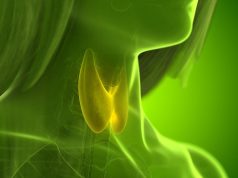Exposure to PM2.5 above 10.75 µg/m3 associated with residence in area with high risk for community-acquired pneumonia in children
FRIDAY, Nov. 12, 2021 (HealthDay News) — Environmental exposures such as fine particulate matter (PM2.5) are associated with residence in high-risk areas for community-acquired pneumonia in children, according to a study published online Oct. 29 in Experimental Biology & Medicine.
Tonny J. Oyana, Ph.D., from the University of Tennessee Health Science Center in Memphis, and colleagues examined the geospatial patterns of community-acquired pneumonia and the impact of PM2.5 on geospatial variability of pneumonia in children in a retrospective cohort study. The mean PM2.5 during the study period was 10.75 µg/m3; high PM2.5 was defined as exposure to PM2.5 concentrations >10.75 µg/m3.
A total of 220 of the 810 patients with radiographic community-acquired pneumonia were identified as being from high- or low-risk areas for community-acquired pneumonia (126 and 94, respectively). In the Memphis metropolitan area, community-acquired pneumonia had a nonhomogenous geospatial pattern. There was an association observed for PM2.5 with residence in high-risk areas for community-acquired pneumonia. The risk for residence in a high-risk area for community-acquired pneumonia was decreased for children with private insurance and bacterial (as opposed to viral) etiology of infection.
“The fact that we saw increased risk for pediatric pneumonia at PM2.5 levels lower than what is currently allowed by the U.S. Environmental Protection Agency is a concern and signals the need for continuous review and policy adjustment based on health effects evidence and exposure or risk information such as this,” a coauthor said in a statement.
Copyright © 2021 HealthDay. All rights reserved.








